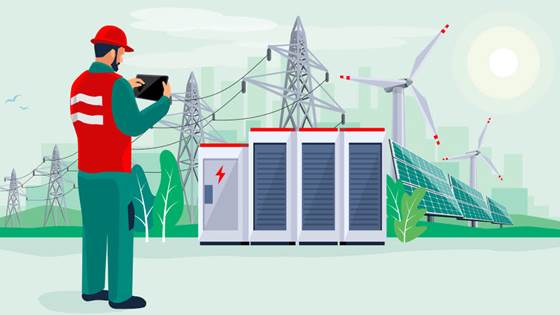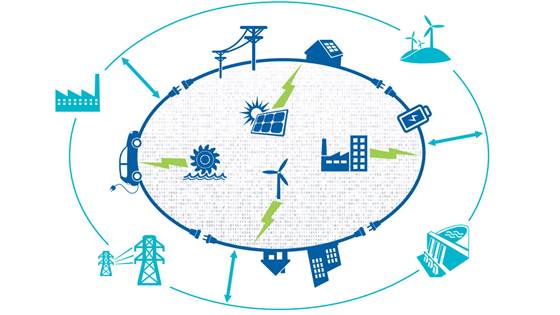Electricity has traditionally been produced in large, centralised power plants, before travelling through the transmission grid and then the distribution grid in order to finally get to the customer. However, the way we produce electricity is changing significantly, and the production is now more complex than ever before.
While we still have the large hydropower plants, a lot of small-scale hydroelectric power plants (100 kW to 10 MW) have gradually appeared, which are connected directly to the distribution grid. In addition, an increasing amount of new renewable energy is being produced from, for example solar panels on buildings. This means that more and more energy is being produced close to or by the customer. In other words, distributed power generation is increasing.
The world needs more electricity, and it is beneficial for the environment if this energy is produced from renewable sources, such as solar power. However, distributed generation can lead to some technical challenges in the distribution grid, including insufficient transmission capacity and low voltage quality. Fortunately, these challenges can be overcome by sufficiently planning for and utilising distributed energy resources, as well as utilising forms of energy storage, such as batteries.
Integration of batteries in the distribution grid
In cases where distributed generation leads to insufficient transmission capacity or poor voltage quality, battery systems can often be a more cost-effective solution than more traditional grid investments, such as upgrading power lines, cables or transformers.
Batteries can benefit the distribution grid in many ways. For example, they can reduce short- and long-term variations in supply voltage, reduce voltage unbalance, cut power peaks, and play an important role in microgrids. Moreover, they can be a useful tool when grid companies plan and operate the distribution grid in the future.
Therefore, at SINTEF, we are conducting research into how battery systems can be best integrated in the distribution grid so that we can plan and operate the power grid in a more socio-economic way.
Prosumers as a flexibility resource
A prosumer is a customer who produces electricity themselves and supplies the grid with any excess electricity they do not use. Typically, these are households or businesses that have solar panels installed on their roofes.
As batteries gradually become more available, we can expect that prosumers with energy storage systems will become more normal. When they produce excess energy, they can store it until it is needed. This means that plus customers with energy storage solutions can become important resources for the rest of the power system.
When insufficient electricity is produced (for example, when wind turbines do not produce enough power due to insufficient wind), the prosumers can supply electricity to the grid from their batteries. This also helps to guarantee the distribution grid’s security of supply and supply quality.
However, prosumers have not yet reached a significant number in Norway and it is still unclear how the consumption and production profile of these customers will impact the grid, and how they could interact with the power system to support the grid.
We work with the following topics:
- Voltage regulation in grids with distributed generation
- Battery system management for customers and grid companies
- Planning future grids that take distributed generation and battery systems into account
- Modelling flexibility from distributed generation and battery systems
Our typical projects include:
- Conducting power flow studies and dynamic simulations of grids with distributed generation and battery systems
- Testing components and control in the Smart Grid Laboratory
- Analysing voltage quality by using Elspec power quality analysers
Who do we do this for?
- Grid companies
- Battery system suppliers and controllers
- Grid customers with battery systems and distributed production




